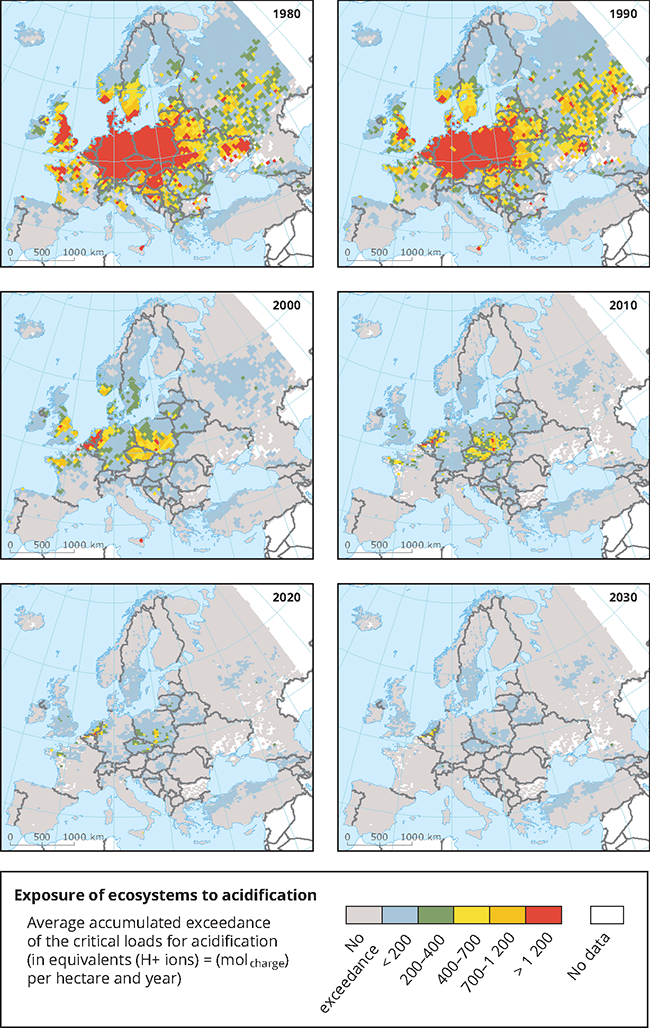Affected areas in Europe
Oxides of sulphur and nitrogen can be carried long distances - thousands of kilometres - by the air. This means that the problem of acidification recognizes no borders. In Sweden and Norway around 90 per cent of the acid deposition comes from other countries and from international shipping.
There are two main factors that determine which areas are affected by acidification:
1. The amount of acid deposition.
2. The resistance of the soil.
When soil has a high content of easily weathered minerals it can absorb a relatively large amount of acid deposition without becoming acidic. But if the minerals in the soil do not weather easily, as is the case in large parts of the Scandinavian peninsula for example, there is little natural resistance. If the resistance of the soil is low then lakes are also sensitive to acid deposition.
The limits to what "nature can tolerate" are called critical loads. The critical load has been defined as "an exposure below which significant harmful effects on sensitive elements of the environment do not occur according to current knowledge".

In 1980 around 43 per cent of natural environment in Europe were affected by acid deposition that exceeded the critical load.
Emissions have however fallen since 1980. Recentcalculations indicate that the exceeded area for acidification in Europehad shrunk to about 6per cent by 2010.
For the year 1990, more than 41 per cent of the ecosystem area in the EU28, or approximately 800 000 square kilometres, received acid deposition above the critical loads. By 2010 this had come down to 10 per cent (around 200 000 km2), and by 2020 this is calculated to be reduced further to about 7per cent. Application of currently available emission abatement technologies (the MTFR scenario) could would result in only3 per cent of the sensitive area being over-exposed(see maps below).
In order to achieve the political goal of non-exceedance of the critical loads it will be necessary to reduce emissions of sulphur dioxide and nitrogen compounds in large parts of Europe by at least 80-90 per cent compared with 1990 levels.
It is also important to note that damage from acidification in an area can last for a long time, even when the critical limit is no longer exceeded.